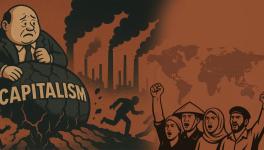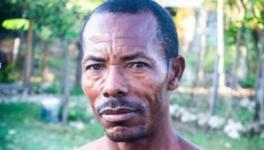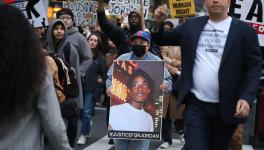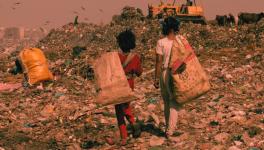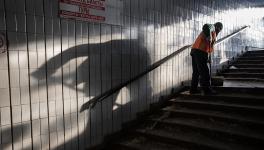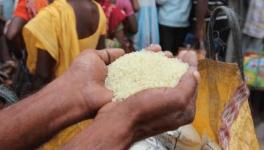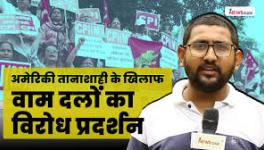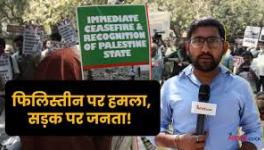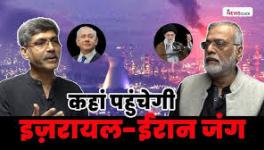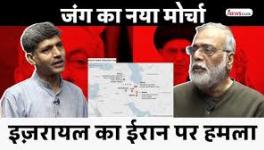Why is South Sudan on Brink of Civil War Again?
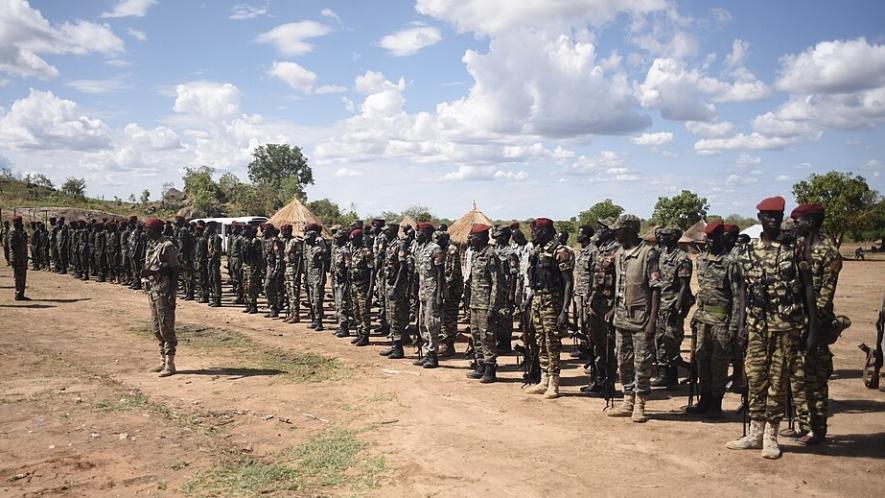
SPLA soldiers near Juba on April 14, 2016. Photo: Wikimedia Commons
With 57% of the population facing acute food insecurity, 2.1 million children at the risk of malnutrition, and 63,000 people on the brink of famine, “South Sudan cannot afford another war,” the UN World Food Program (WFP) warned on Monday, March 31.
Among the world’s poorest nations, the oil-rich East African country is the youngest republic, established in 2011 with the backing of the US and its allies, seceding from Sudan after one of the longest civil wars in modern history.
Barely three years later, the infant republic was hurled into a civil war in late 2013 as the internal power struggle between its President Salva Kiir and Vice-President Riek Machar escalated into violence, killing hundreds of thousands and displacing over a third of the population.
The peace agreement the two unelected leaders had reached in 2018 to share power collapsed last month.
Fighting began in mid-February in the northeastern border state of Upper Nile between the national army, known as the South Sudan People’s Defense Forces (SSPDF), and the Nuer White Army. It is a militia allied with Machar’s Sudan People’s Liberation Movement-in-Opposition (SPLM-IO).
By late March, clashes were also reported just outside the country’s capital Juba, between the SSPDF and the opposition’s official armed wing, the Sudan People’s Liberation Army-in-opposition (SPLA-IO). Amid this escalation, the military intelligence and the presidential guard placed its leader Machar under house arrest last week.
Hoping to pull South Sudan back from the brink of another civil war, the African Union (AU) Commission’s “Panel of the Wise” – composed of former regional state leaders and jurists – is in the country from April 2 to 6 to meet Kiir and Machar.
Following a meeting with Kiir on April 2, Head of the Panel, Domitien Ndayizeye, former president of Burundi, said that the government “assured us of their willingness to implement” the 2018 agreement.
It remains to be seen whether the panel will also be able to meet Machar. An earlier delegation of the East African eight member-states bloc, the Intergovernmental Authority on Development (IGAD), led by Kenya’s former PM Raila Odinga, was denied access to meet Machar.
Kiir’s government maintains that Machar is under investigation for allegedly ordering the armed groups allied with him to attack the national army, known as the South Sudan People’s Defense Forces (SSPDF).
Citing “arrests and detention” of several leaders of the Machar-led SPLM-IO, leaders of this armed opposition did not meet the Panel. Calling for the release of Machar, the opposition demanded that the Panel meet him directly and hold negotiations in a neutral territory.
Split in the secessionist movement
Both Kiir and Machar were senior commanders in the Sudan People’s Liberation Army (SPLA), the armed wing of the Sudan People’s Liberation Movement (SPLM), which had fought the war to secede from Sudan under its founder, John Garang.
Fought between the largely Muslim, Arabic-speaking north and the majority Christian south, speaking African languages, the war claimed two million lives, mainly in the south, due to violence, famine, and disease outbreaks.
While Garang sought autonomy, both Kiir and Machar differed with him, demanding independence instead. However, this common difference with Garang did not unify them. Even as both were fighting the government of the then undivided Sudan, Machar received its support to break away from Garang’s SPLM in 1991 to form an opposition SPLM-Nasir faction.
The Nuer White Army, a militia affiliated with it, committed a massacre in the city of Bor that year, targeting the Dinka ethnic group from which both Garang and Kiir hailed. Retaliatory attacks followed on Machar’s Nuer ethnic community, setting the stage for the ethnic strife that continues to date.
Putting a halt to this infighting as the war with the Sudanese government escalated, Machar rejoined Garang’s SPLM in 2002, ahead of the peace deal in 2005, stopping the guns after 22 years. Garang died soon after, leaving Kiir and Machar as its top leaders.
They respectively went on to become the president and vice president of South Sudan after it was established as an independent republic in 2011 following a referendum. However, independence did not bring peace. As tension continued to simmer between its top two leaders, Kiir sacked his cabinet, including Machar, in mid-2013.
And so, later that year, the recently-formed republic was hurled into a civil war less than three years after its founding. Following clashes in Juba in December 2013 when the military headquarters was attacked, Kiir accused Machar of plotting a coup. The armed forces loyal to Kiir killed hundreds of ethnic Nuer men in Juba for their perceived loyalty to Machar.
Denying that he plotted a coup, Machar once again split from the SPLM, forming the Sudan People’s Liberation Movement-in-Opposition (SPLM-IO).
A modern ethnic conflict
Its affiliate, the Nuer White Army, committed mass killings and acts of rape against the Dinka ethnic community in the cities of Bor, Malakal, and Bentiu.
Dinka is the largest ethnic group in South Sudan, and Nuer is the second largest. These ethnic identities were traditionally fluid, with widespread intermarriage and cross-migration into each other’s communities.
Rigidified by the colonial administration, as in the case of many other parts of Africa, these identities were weaponized subsequently for the internal power struggles in the postcolonial state, pitting the two communities against each other. The civil war claimed about 400,000 lives and displaced 4 million, over a third of the country’s population.
This fighting lasted for almost five years, with only brief interruptions by multiple ceasefires that failed to hold, until a power-sharing agreement was finally reached between Kiir and Machar in 2018 – known officially as the Revitalized Agreement on the Resolution of the Conflict in the Republic of South Sudan (R-ARCSS).
They formed a “unity government” in February 2020, in which Kiir retained the presidency. Machar was appointed the first vice-president, along with four other vice presidents from different rebel groups the SPLM had splintered into.
No election in sight
The R-ARCSS had provided a 36-month transitional period for this government to integrate the armed opposition into a unified national army and hold elections by December 2022. However, that August, the signatories postponed the election to December 2024, and again to December 2026.
Now, on the brink of another civil war, uncertainty looms over the new election date. Little progress has been made toward integrating the armed opposition into a unified national army.
Tensions escalated with the redeployment of the SSPDF to the military barracks in the city Nasir in the Upper Nile, a stronghold of Machar where he had set up a parallel government by the time of the peace agreement in 2018.
The White army attacked the SSPDF troops, resulting in clashes killing several on February 14 and 15, including the soldiers and civilians. Fighting escalated later that month.
On Machar’s request, Kiir convened a meeting to de-escalate the hostilities on March 3. “The meeting was cordial…and fruitful. It came out with resolutions, inter alia, that the White Army should withdraw to their villages and allow the SSPDF in the boats to proceed to Nasir as planned,” according to Information Minister and government spokesperson, Michael Makuei.
In the meeting, the leadership of the SPLM/A-IO “distanced itself from the White Army but nevertheless promised to talk to the White Army, which they did, but instead gave them the green light to proceed and attack the garrison.” On March 4, the garrison was overrun. Soldiers who had escaped from the garrison had taken refuge in different villages.
UN helicopter attacked
The UN Mission in South Sudan (UNMISS) was assured a safe passage to extract the soldiers from the region to de-escalate the fighting. However, on March 7, the White Army attacked the UN helicopter, killing one of its crew members and the 28 SSPDF troops it had flown to evacuate, including Major General Majur Dak.
“The attack on UNMISS personnel is utterly abhorrent and may constitute a war crime under international law,” said the Special Representative of the Secretary-General and Head of UNMISS, Nicholas Haysom, protesting the violation of the safe passage it had been assured.
After attacks on soldiers spread to several other towns and cities in Upper Nile, Kiir’s government sought help from the Ugandan army, with whose assistance the SSPDF carried out airstrikes from March 15 to 17, allegedly killing 21 civilians, including a woman and a child.
Civilians on target
“Any civilian who is in the military zone and refusing to leave… will be treated accordingly,” the Minister of Information and the government spokesperson, Michael Makuei, said in a press conference on March 17. “We don’t want later people to come and say the government is killing the civilians; meanwhile, the civilians have killed the army.”
That day, the SPLM/A-IO announced its withdrawal from the political and security mechanisms envisaged in the 2018 peace agreement, protesting the government’s detention of over two dozen of its leaders, including MPs, military officers, and ministers.
Clashes hitherto limited to the border states of Upper Nile on the northeastern border and Western Equatoria in the southwest were expanding into southern Central Equatoria state, reaching the outskirts of the capital Juba.
On the morning of March 24, the SSPDF said that its troops who had set out on a recce from the military base in Nyamuni had to retreat to avoid confrontation with another recce by the SPLA-IO forces from the nearby Wunliet cantonment site in a combat-ready formation.
Accusing them of coming too close to the base and making hostile maneuvers over the last four days, the SSPDF shelled the cantonment in Wunliet, less than 30 km west of Juba. To its south, the SPLA-IO’s training center in Rajab was also attacked two days later, on March 26. Security personnel detained Machar that day, placing him under house arrest on the accusation of ordering attacks on the SSPDF.
“We call on President Kiir to reverse this action and to prevent further escalation. We note that First Vice President Machar’s position in the government is established under… the 2018 Peace Agreement,” read a joint statement issued from Juba on March 27 by the diplomats from the US, Britain, Netherlands, Norway, France, Germany, and the European Union.
His arrest “brings the [peace] Agreement to a collapse; thus, the prospect for Peace and Stability in South Sudan has now been put into serious jeopardy,” said Oyet Perieno, the deputy chairman of the SPLM-IO and the first deputy speaker of the national parliament. “Consequently, we would like to declare that…the R-ARCSS 2018 has been abrogated.”
A bulk of the SPLA-IO combatants have moved out of their training centers where they had been awaiting integration into the army. Reassuring them that their integration into the army as promised in the 2018 agreement will be implemented, Information Minister Makuei urged, during a press conference on March 28, “Please come back to the cantonment site… We will not question you.”
Nevertheless, mistrust remains high on both sides. “All the dark clouds of a perfect storm have descended upon the people of the world’s newest country – and one of the poorest,” UN Secretary-General António Guterres warned on March 28. “What we are seeing is darkly reminiscent” of the civil war between 2013 and 2018, “which killed 400,000 people.”
Courtesy: Peoples Dispatch
Get the latest reports & analysis with people's perspective on Protests, movements & deep analytical videos, discussions of the current affairs in your Telegram app. Subscribe to NewsClick's Telegram channel & get Real-Time updates on stories, as they get published on our website.









